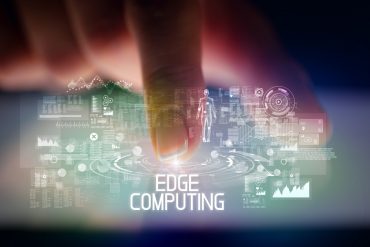
Bringing the industrial metaverse to life will require substantial cross-industry collaborations on standards and infrastructure.
The metaverse is seen as a hyped term, with plenty of skepticism about whether it will actually deliver on its promises of a well-organized new virtual frontier. But there’s one place where the metaverse is real, and, right now, is being put to practical use: the manufacturing sector.
Welcome to the “industrial metaverse,” which promises to bring about simulated machines, factories, transport networks, and other complex systems. In a recent analysis published by MIT Technology Review and Siemens, technologies such as digital twins, 5G, edge computing, and virtual and augmented reality are converging to provide a virtual space for industrial concerns of all shapes and sizes. “In the same way the mobile phone revolution changed how we consume media, the metaverse will change how we interact with the real and virtual world,” says Hemdat Sagi, chief strategy and business development officer at Konnect Volkswagen Group Innovation Hub in Tel Aviv, quoted in the report.
Such a world is “immersive, making users feel as if they’re in a real environment; collaborative in real time; open enough for different applications to seamlessly interact; and trusted by the individuals and businesses that participate,” according to Annika Hauptvogel, vice president with Siemens.
See also: There’s Gold in the Metaverse Hills, But it Needs to be Mined Thoughtfully
The industrial metaverse is being built on the following technologies:
- Digital twins
- AI & ML
- Edge & cloud computing
- Networks (5g/6g)
- Blockchain
- VR/AR
Combined, these technologies offer ways for teams from across the globe to collaborate, design, produce, and ship products within a single, shared environment. “Digital models of equipment and machinery can be used to interact,” the report states. “The industrial metaverse will bring together the digital and real worlds. It will enable a constant exchange of information, data, and decisions and empower industries to solve extraordinarily complex real-world problems digitally, changing how organizations operate and unlocking significant societal benefits.”
Digital twins represent the gateway to the industrial metaverse, the report suggests. “The digital twin is a core metaverse building block. These virtual models simulate real-world objects in detail. The next generation of digital twins will be photorealistic, physics-based, AI-enabled, and linked in metaverse ecosystems.” Manufacturing teams will be able to “examine what-if scenarios and run simulations to generate richer and more granular insights for more sophisticated business cases. Autonomous vehicles could be trained in simulated photorealistic environments, and then, during operation, collect real-world data to improve their initial training model.” Some analysts even suggest this could be called the “internet of twins.”
Still, the report’s authors caution. there’s a long way to go, with a “need for interoperability standards,” along with “data privacy and security concerns.” In addition, key capabilities still under development include “connectivity, computational power, digital twin fidelity, and interoperability. Marketplaces, payment systems, and regulatory frameworks for metaverse tools and applications will have to be designed and built.”
Collaboration between industry users and technology providers will be key to overcoming these challenges, the co-authors urge. “Bringing the industrial metaverse to life will require substantial cross-industry collaborations on standards and infrastructure. Organizations may partner with suppliers, competitors, or customers to assemble the complex technology stacks undergirding metaverse participation. Metaverse players ranging from established companies to startups and from governments to individual enthusiasts will bring new ideas and voices into the industrial metaverse.”




























